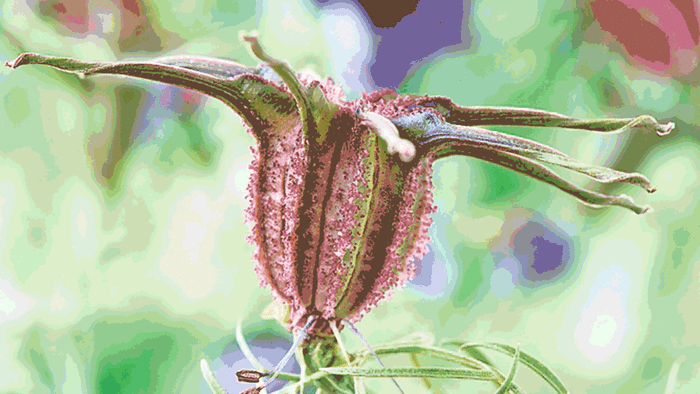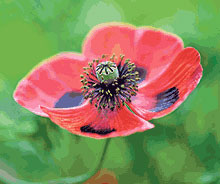What and when to sow to ensure a long and colourful season


Roula Khalaf, Editor of the FT, selects her favourite stories in this weekly newsletter.
English gardens are way ahead of their normal calendar. Visitors with pre-booked holidays will be in for some surprises: roses in May and campanulas in early June. Usually a year comes back into balance but what is balance nowadays? We have had heavenly, accelerated conditions. I am now anxious and wondering how to sustain the later summer. The answer is to go for flowers whose progress you can best control, such as annuals and summer bulbs. I will spend this morning sorting out their penultimate sowing and planting. Conditions have been near perfect and by staggering the times I hope to extend the season. The last sowings will be in mid-May to keep the momentum up until October. Staggered sowing is not only for vegetables.

The bulbs are the easier bet. In hotter bolt holes near the sea I would make far more use of them than is usually evident to my drowsy, after-lunch eye in an expatriate late August. Two weeks ago, I ordered a truly experimental mini-gladiolus called Atom. It is dark orange red with a pale stripe and only 2ft high, so it needs no staking. It can go into my sunny box-edged beds which are partly over-run by the wondrous hardy Geranium Rozanne and its constant blue and white flowers. The gladioli will thrust up through the trailing stems and give late August a new zing. If the colour sounds frightful and you would prefer to wait for me to do penance later, try the calmer Gladiolus Carine instead. Its flowers are ivory-white with reddish pink blotches in their throats. I can guarantee this one. These dwarf gladioli are Gladiolus nanus varieties and really are hardy from one year to the next. I left mine in the flower beds in winter 2012-13 and they all survived. I regard them as a gift horse which most gardeners still look in the mouth. They are cheap, so easy to plant in any light soil and I assume they would be just as good in a Mediterranean garden in late summer.

Since early April I have been lining out a few taller gladioli because I know that they too will not now jump the gun and start flowering in June. Black Velvet is a truly stunning deep violet purple, newish to commerce, and is magnificent as a cut flower with long stems 3.5ft high. If you want to break yourself in more gently, try the calmer, white-flowered Gladiolus Sancerre. The discriminating Sarah Raven (sarahraven.com) is offering this one in her spring collection of ideas. She has a practised eye for cut flowers. To her, Sancerre is “creamy white, with throats the colour of the classic white wine”. In my mind’s eye it was snow white all over last year, but I will look on it with a new appreciation this August.
My August would not be August without a disaster waiting to happen. Experiments so often go wrong. I have just ordered on spec an exciting new dwarf Canna which may well fill this year’s disaster vacancy. Canna Lucifer is dark red with an outer edge of yellow and, in photos, it looks as exotic as an orchid. It is only about 2.5ft high. I am somehow going to work 10 of them into my main flower beds, remembering that Cannas like plenty of water during the season. If it flowers, it will be unmissable, perhaps alarmingly so. I like the shorter height and the fact that it is a canna with none of the purple-leaved and scarlet-flowered vulgarity which has brought the family into disrepute, except on French roundabouts. If you want to wait and see, buy Canna Moonshine, which is taller but safely white-flowered. These Cannas flower for so many weeks, making them even better value than lilies if you get the colours right.

Down at ground level, there has never been a better year for sowing hardy annuals directly outdoors. The soil has been damp underneath but workable on top, and earlier in the month there were always wet days or hours between the divinely sunny spells. Seeds germinate like cress in such conditions, especially when the evenings warm up. I have been making my usual short lines, or seed drills, with the back of a rake’s head. Into them I sow annuals directly from their packets and then gently rake the disturbed soil back to give them a very light covering. I pat it softly down with the rake’s head, this time held flat.
Naturally, a prime choice this year has been Nigella, especially the newish Moody Blues which mix dark and light shades in one mixture. This Love-in-a-mist is such a great interplanting for flower beds, which look as if they are going to go over in time for Chelsea Flower Show. Sarah Raven and I part company here. She rates Nigella hispanica as the most spectacular of the family because of its deep purple flowers and crimson red seedpods. She is also keen on Nigella papillosa African Bride, which I find too white and washed out and not African at all. Surely Nigellas should be blue. Raven likes “10 or 15 stems on their own in a simple jug or a rosemary-covered jam jar”. Maybe I should get busy with covering some jam jars. She offers these Nigellas as seedlings, already germinated, for £8.95 for 10. They are not at all difficult to grow from scratch.

This week is an ideal time to plaster the garden with annual nasturtiums. Those trailing beauties across the path in Monet’s “Grande Allée” are famous, but most of us forget to adapt the idea over low walls or across gravel paths until the summer is too far advanced. Nasturtiums now come in every frill and mini-height but I still go for single-flowered, trailing long-stemmed forms as the first choice. If you can cope with the black flies which lay eggs all over the stems, these nasturtiums are superb as long trailers over the edges of urban window boxes. Plain old majus is still unsurpassed. Remember that if you want a deep crimson red, the Empress of India will not trail at all and the dark flowers will not show up well on, say, gravel, especially against her dark leaves. For a dark red trailer, Indian Chief is a better bet. To my eye, variegated nasturtiums are a mess. Whichever you choose, you cannot go wrong when sowing them straight from a packet. Their seeds are as big as peas and merely have to be pressed into the ground at intervals. They are the beginner’s dream, though the flowering will vary according to the dryness of the later season.
As 2014 is the centenary of the Great War’s beginning, what better than some low-growing blood-red poppies to mark the occasion? The best, for my money, are annual Ladybird poppies or Papaver commutatum, the dark crimson ones about 1ft high whose flowers are marked with black blotches. They are so easy to germinate outdoors and yet they are not in every summer garden. Remember, with this Remembrance flower, it is you who will be controlling the timing, whereas viburnums, irises and roses are careering away without any respect for you as their starter. Annuals’ flowering depends on when you sow them, however “advanced” the season may be. If you run out of colour in early July, it is because you missed the chance right now to carry it on into autumn.
Comments